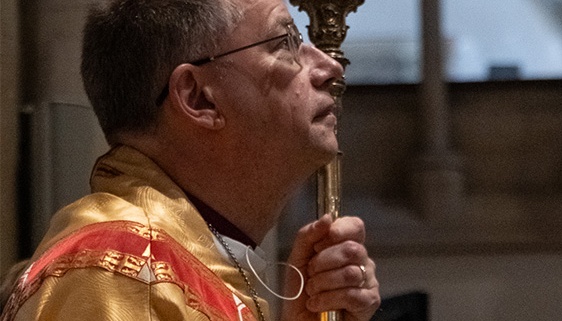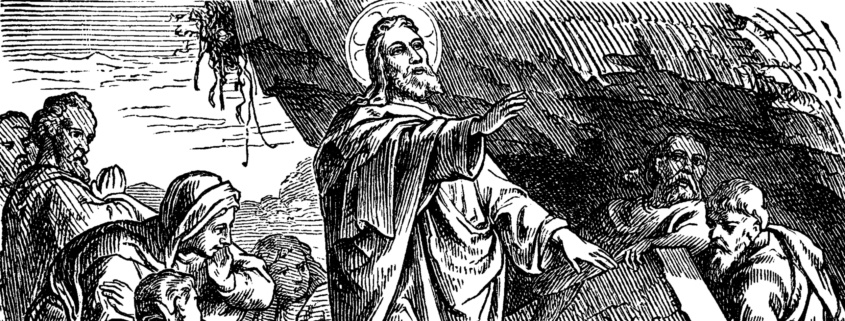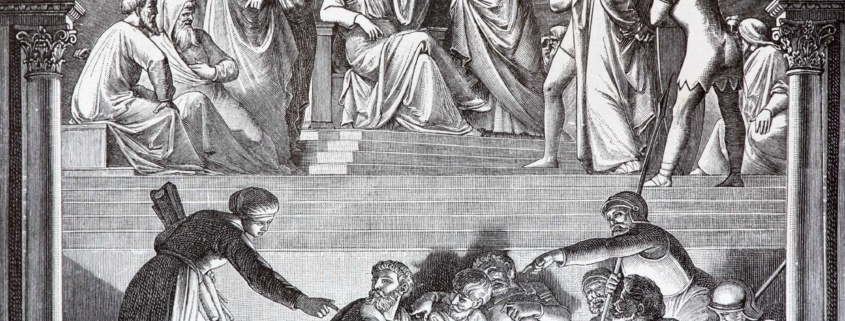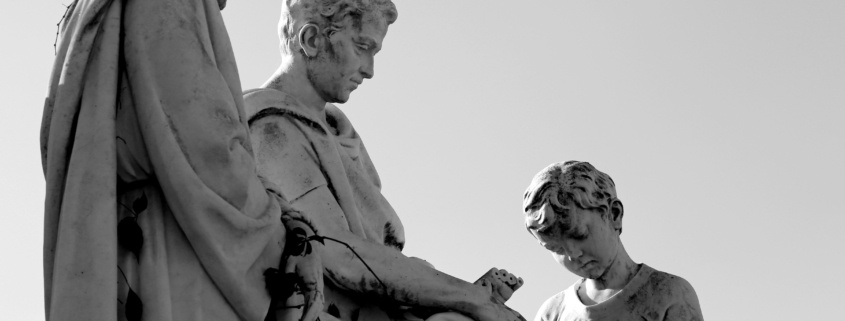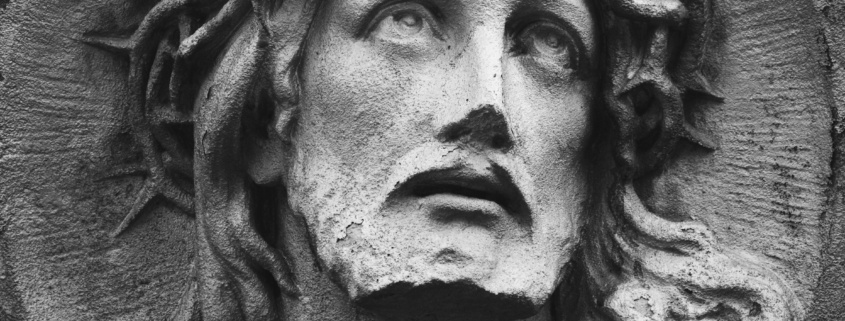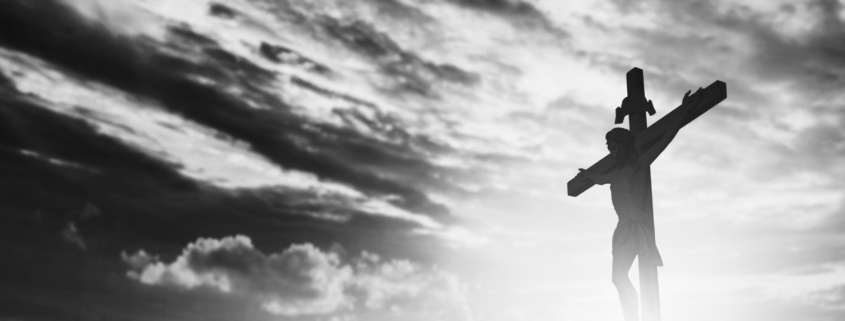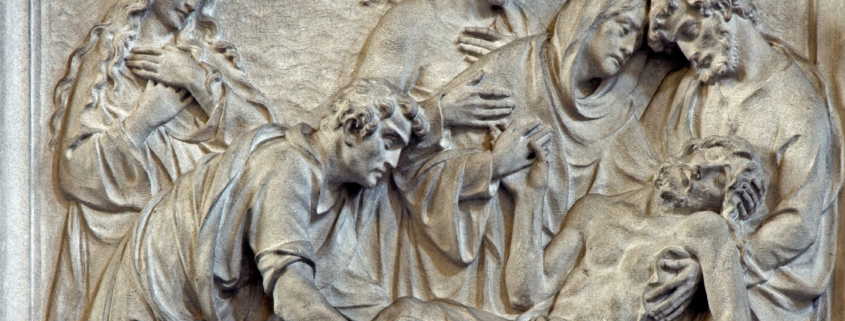For they did not yet understand (20.9)
A very happy Easter to you and to your families. May you know the hope of the risen Christ in your homes and in your hearts.
I love the gospel stories of the resurrection. One of the things I love in Luke and John especially are the different characters in the stories. No two people respond in the same way to the good news of Easter Day.
In our gospel reading we see Peter and the disciple Jesus loved and Mary Magdalene. Mary comes to the tomb early. She finds the stone rolled away and runs to Simon Peter and the other disciple. They in turn run to the tomb. Remember they are in the first days of shock and grief.
The other disciple outruns Peter. He bends down and looks in but will not enter. Simon Peter arrives, breathless and goes in. They see linen wrappings, a cloth rolled up by itself. The other disciple now enters. He sees and believes: the first to do so.
Then the gospel tells us: for as yet they did not understand the scripture that he must rise from the dead. They did not understand.
Peter and the other disciple return home, still unsure of what to do. Mary stays weeping outside the tomb. It is Mary who has a vision first of angels and only then, when she has heard the angels, of Jesus himself. Even then Mary does not recognise him but mistakes him for the gardener.
Then Jesus speaks Mary’s name and finally she understands. Rabboni. Her longing is to embrace him but still there are things Mary does not understand but needs to do.
Peter, Mary and the beloved disciple each have their journey of understanding the immensity of resurrection. A whole world view is shifting here and it shifts at different rates for different disciples.
Mary arrives at the tomb with an unshakeable belief that Jesus has died and is gone for ever. She leaves the garden with an unshakeable belief that Christ is risen and death has been conquered. How does that transformation happen?
Mary begins to ask questions when she sees an empty tomb; the fear and excitement of Peter; the faith of the beloved disciple; the linen bandages and the folded cloth. Cracks appear in her understanding. Mary slowly begins to doubt her conviction that Jesus is gone for ever. The seed of a new faith begins to grow. Perhaps, perhaps.
That seed of faith enables Mary to see and hear the angels, apparently unseen by Peter and John a few moments ago. Faith grows as Mary sees and hears the angels. Mary turns and sees Jesus but also does not see him. Even now the paradigm holds strong. Those who have been cruelly crucified cannot be found walking in gardens on the morning of the third day.
But then Jesus speaks. His voice is unmistakeable. Mary looks up and opens her eyes. The strong fortress of her ideas on death, her entire view of the world, formed generation after generation crack from top to bottom then crumble and fall away. Mary believes: Rabboni? First questioning. Rabboni? Then full of joy.
The gospels tell us that when a disciple comes to believe the resurrection it is not a simple matter or the work of a moment. It is not simple for Mary here; or for Simon Peter or the beloved disciple. It will not be simple for Thomas in the upper room or Cleopas and his companion on the road to Emmaus who walk for hours with him unrecognised. It is not simple for the disciples in the Upper Room. Luke captures their journey to faith as they met the risen Christ in this intriguing sentence: “While in their joy they were disbelieving and still wondering….” (Luke 26.41). It will not be easy for Saul on the road to Damascus as the glory of the resurrection will for a time mean he can literally see nothing else.
This is no easy, instant faith or simple change to make. To believe the resurrection of Jesus is always an individual journey for every person. For the disciples it means spiritual encounter; it means searching the scriptures and understanding them in new ways; it means replaying their memories of journeys with Jesus and the difficult and unlikely things he said; it means wrestling with doubts; denying even the possibility, scarcely daring to believe it could be true; coming to terms with their own failure and blindness and betrayal; and realising what this will mean for the whole of their lives. The majority will give their lives in different ways to transmit this truth and understanding to the world.
In the end each of them will come to believe that they believe, not through their own cleverness or virtue or understanding. Each of them will come to believe that they believe through grace: because God in Christ reveals himself in a way that draws them deeper into faith and hope and love. That revelation comes through evidence and reason and conversation and encounter in unique ways for each disciple as the gifts and witness of each combine into the new community of faith.
It is no small thing therefore in 2024 even to be present in this Cathedral church on Easter Day. It is no small thing to declare together Alleluia Christ is Risen in the face of death. It is no small thing to gather around the table of the Lord and meet with the risen Christ in bread and wine, to seek forgiveness and renewal, to reassess our lives in the blinding light of resurrection.
If we are hesitant or uncertain in our responses, we are in good company. Simon Peter and Mary and Thomas have been there before us. If we need to lean back into the faith and worship of the church and lean on the faith of others, then that is understandable: these are such world shaking and life changing truths. As long as we then keep seeking.
We live now in a world which does not readily admit the miraculous or the transcendent; a world which limits itself to what can be seen and understood with the senses. We live in a world in which it is harder to believe and where the echoes of the song of faith grow more distant with every generation. We live in a time when the church is weaker in this land than any time we can remember but we know also that God’s power is made perfect in our weakness. We live in an age where it seems that all the vast river of human suffering and evil flows past our eyes continually in an every present and distressing cycle of distress which weighs heavily on the souls of so many and saps our strength. This too is a barrier to faith the first disciples never had.
Each of us will find in different ways that the ways we believe must be revisited with each decade of our lives; that personal suffering and grief will change and challenge us; that our perspective and our doubts shift and change with experience and age.
But still, but still. We are drawn back to this living fire of faith even if it is only to creep in at the door and listen. We are disenchanted with a material and finite world. We long for some deeper truth; some greater mystery; some better, richer, story; some greater cause. And the still small voice within whispers still, come deeper; come and see.
The truth we are seeking, which changes everything is here: in discarded graveclothes and an empty tomb; in the struggles of the witnesses; in the great narrative and the detail of the scriptures; in the testimony of the church across the ages; in the changed lives of the saints; in the examples of Christian love we see around us; in the calls we hear within; in our resting and replenishing in Holy Communion; in faith enduring the face of suffering.
Today is a day to say yes; to declare our faith; to seek God’s renewing power. Christ is risen. He is risen indeed Alleluia.
Faith is rekindled. We make a fresh offering of our lives. We will follow with Simon Peter, with the beloved disciple, with Mary Magdalene. We will hear his call and follow.
Amen.

